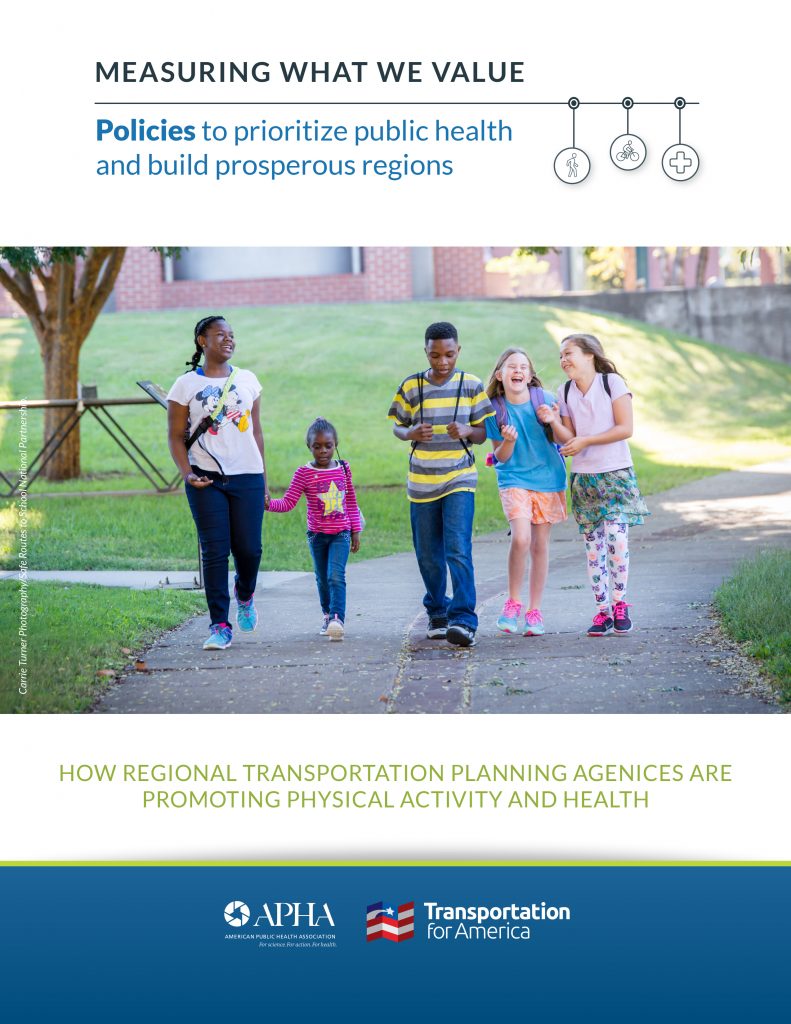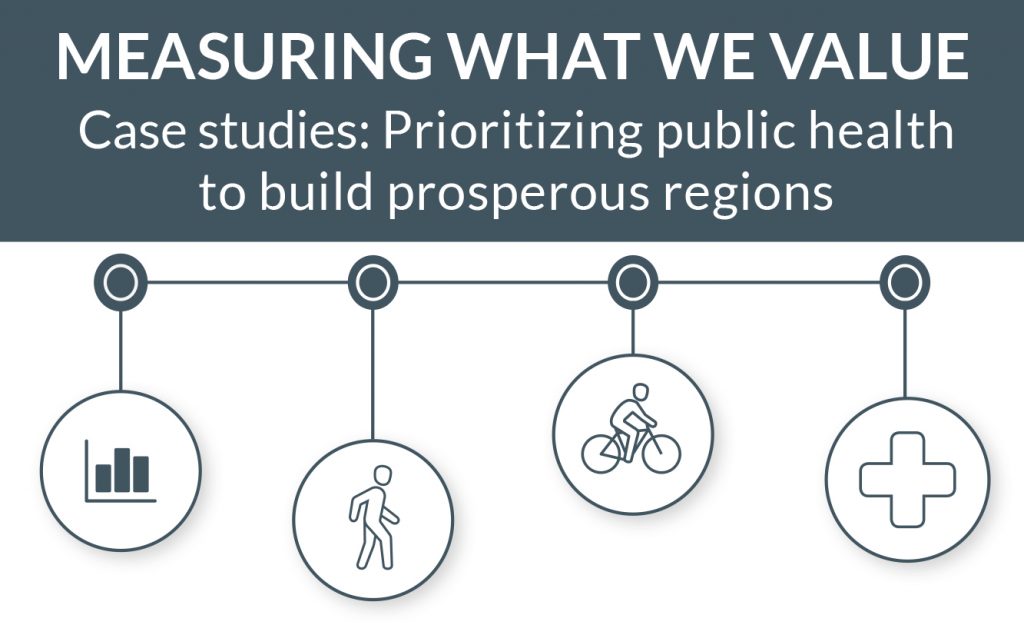Measuring What We Value – Healthy MPOs policy paper
Measuring What We Value
POLICIES to prioritize public health and build prosperous regions
 How we get around each day shapes our quality of life, especially our health. People who walk or bicycle more for transportation are shown to have lower rates of heart disease, diabetes and other conditions that can complicate or shorten lives. And the demand for more opportunities to safely walk and bicycle is at an all-time high in cities and towns of all sizes across the country.
How we get around each day shapes our quality of life, especially our health. People who walk or bicycle more for transportation are shown to have lower rates of heart disease, diabetes and other conditions that can complicate or shorten lives. And the demand for more opportunities to safely walk and bicycle is at an all-time high in cities and towns of all sizes across the country.
Communities are responding by planning, funding, and fast-tracking projects to make bicycling, walking, and riding transit safer, more convenient, and more realistic as travel options.
But getting these projects planned, designed and built can be a challenge.
How can regions bring more of these projects to fruition? How can they integrate them into the processes of choosing what to build? How can they upend perhaps decades of radically different priorities to make these types of projects the norm?
This paper, produced with the American Public Health Association, outlines four policy levers that metropolitan planning organizations (MPOs) have at their disposal to help increase and improve active transportation projects to meet the demand, decrease health disparities, increase access to opportunities, and strengthen local economies — with specific short real-life stories to go with each.
Download the paper
Read detailed case studies
We profiled five of the MPOs included in this paper at length in this package of related short case studies.




